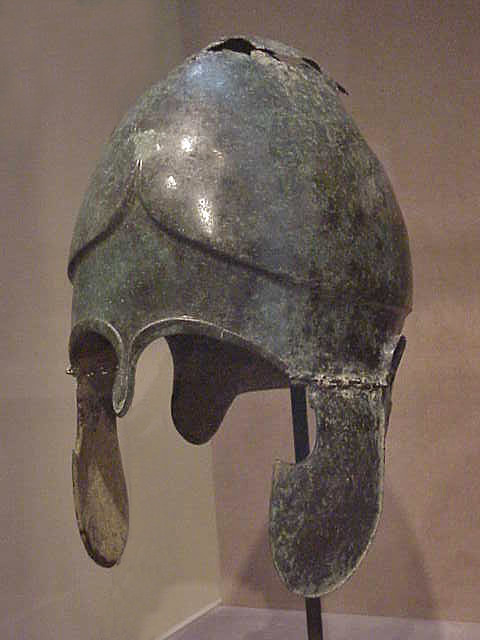.
Greek Chalcidian style helmet bronze 500 BCE
"The form of this helmet, known as Chalcidian, is distinguished by the curved cheekpieces, which are attached here by pins terminating in snake heads. For a Greek youth, the acquisition of a helmet was a long-awaited badge of manhood. Each helmet had to be custom-made and was typically lined with leather. A helmet was customarily hung on the wall of the owner's house during his lifetime and, especially in early times, would also be buried with him.
The advance in Greek technology that made possible the widespread production of hammered bronze helmets also led to the mass production of shields. As a result, on the battlefield individual duels were superseded by the phalanx, a form of combat in which warriors advanced together as an almost impenetrable wall of weaponry." - Walters Art Museum
Walters Art Museum, Baltimore, Maryland USA


